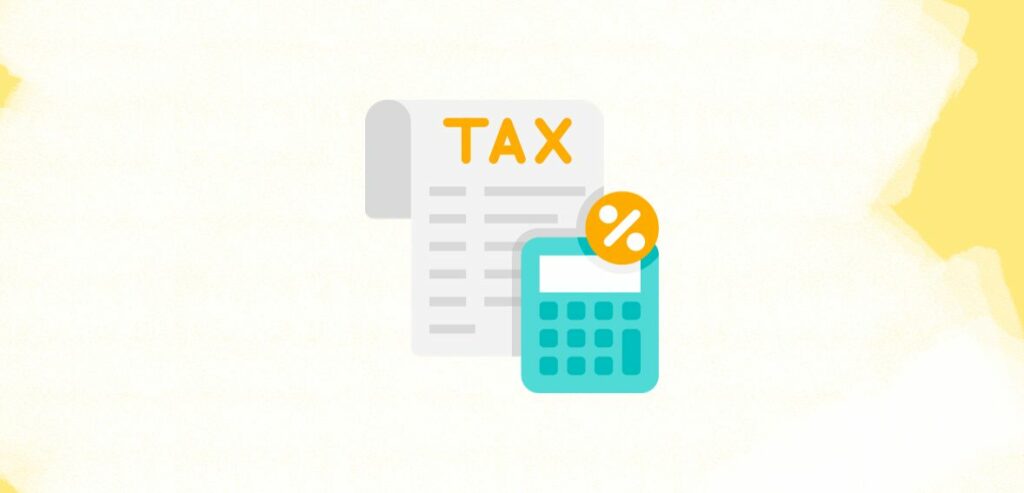While tax season might be a stressful time of the year, the prospect of saving money on your taxes could undoubtedly grab your attention. Fortunately, the IRS provides numerous tax deductions for business owners and entrepreneurs annually. These deductions not only trim your income tax but also reduce the income subject to self-employment tax.
Lowering your adjusted gross income can have additional benefits, impacting your overall tax liability positively. In this article, we’ll explore essential ways to help business owners save on taxes. Understanding and leveraging these strategies can make the tax season a bit more manageable.
Important Abbreviations:
- IRS: Internal Revenue Service
- FICA: Federal Insurance Contributions Act
- FUTA: Federal Unemployment Tax Act
- HRA: Health reimbursement arrangements
- ADA: Americans with Disabilities Act
- SSTB: Specified Service Trade or Business
- IRC: Internal Revenue Code
- TANF: Temporary Assistance for Needy Families
- SMB: Small And Medium-Sized Business
Top Way Businesses Can Save Taxes Substantially In 2024

1. Hiring A Family Member
One effective strategy to trim taxes for your small business involves hiring family members, and the IRS offers various options with the potential to shield income from taxes. Surprisingly, this includes the possibility of hiring your children.
Children employed in a parent’s business are subject to income tax withholding, irrespective of age. If the business operates as a partnership or corporation, their wages are also subject to FICA and FUTA taxes—unless each partner is the child’s parent.
Significant savings, however, come into play for sole proprietorships or partnerships where each partner is a parent of the child-employee. In such scenarios:
- Minors do not pay FUTA or FICA taxes.
- FICA taxes apply to 18 to 20-year-olds, whereas no FUTA taxes are applicable.
This breakdown illustrates potential substantial tax savings depending on your child’s age. Dodging FICA or FUTA taxes, or both translates to more money in both your pocket and your child’s.
Another option is employing your spouse
When your spouse becomes an employee, their wages are subject to income tax withholding and FICA taxes, but not the FUTA taxes. Notably, the FUTA tax, usually applicable to non-spouse employees, is waived, leading to substantial savings.
To ensure the efficacy of this strategy, it’s crucial to treat and compensate your spouse as an official employee. In cases where spouses jointly run a business and share in the losses and profits of the company, the IRS might consider them partners, even without a formal partnership agreement.
If you work as a sole proprietor with an HRA, hiring your spouse can offer additional savings. The business can provide tax-free rebates for medical expenses incurred by your family, simultaneously deducting these reimbursements to reduce your income and self-employment taxes. Importantly, HRA reimbursements are exempt from FICA taxes, and the plan itself serves as a tax-free fringe benefit for your spouse.
2. Starting A 401K Retirement Plan
As a business owner, you likely wear multiple hats, including that of an employee. This dual role opens the door to leveraging tax-saving options. For high-income business owners, there’s an added opportunity to enhance savings through the utilization of a solo 401(k), providing a flexible and advantageous retirement plan.
With a solo 401(k), you can contribute up to 100% of your income as an employee, reaching the annual limit. Furthermore, you may qualify for an employer contribution based on your net income. In 2023, the contribution limit has increased to $66,000, up from $61,000 in 2022. If you’re 50 or older, you can contribute an extra $7,500 through a catch-up contribution. Moreover, contributing to your retirement account may make you eligible to claim the Saver’s Credit, offering a financial boost of up to $1,000 (and for married filing the taxes jointly, it goes up to $2,000).
Another viable option to explore is the SEP IRA. This retirement account permits you to save up to 25% of your income, mirroring the contribution limits of a solo 401(k) in the current year.
And not only this a 401(k) isn’t just an “employee” benefit—it can also be a strategic way to reduce your overall business expenses through potential deductions. This includes deductions for contributions made to any administrative costs associated with managing the 401(k) plan or employees. Whether it’s payments to an auditor, recordkeeper, TPA, or other consultants aiding in your plan management, these costs may be eligible for write-offs.
3. Claim QBI Tax Deduction
The QBI (or Qualified Business Income) deduction is a tax-saving opportunity designed for eligible SMB owners and self-employed persons. This deduction allows you to potentially deduct up to 20% of your QBI on your taxes.
To qualify, the total taxable income for 2023 must generally be under $182,100 for single filers or $364,200 for joint filers. In 2024, these limits increase to $191,950 for single filers and $383,900 for joint filers.
The QBI deduction is tailored for individuals with qualifying income, which refers to business income reported on personal tax returns. Entities eligible for this deduction are:
- Sole Proprietorships: Individuals managing businesses without a formal business structure fall into this category.
- Partnerships: Businesses operated by two or more individuals who share partnership income, losses, and responsibilities.
- S-Corporations: A specialized type of corporation choosing to pass corporate elements like income, losses, tax deductions, and credits to shareholders.
- LLCs: Depending on their tax structure, LLCs may qualify for QBI deductions, especially those taxed as sole proprietorships or partnerships.
It’s important to note that components of your QBI include gains, income, expenses, and losses incurred within your business. However, if your business falls under the category of an SSTB, specific rules come into play.
For joint filers with taxable income exceeding $464,200 and other filers surpassing $232,100 in 2023, the Section 199A deduction doesn’t apply to SSTBs.
For those with taxable income falling between $364,200 and $464,200 for joint filers or $182,100 and $232,100 for other filers, claiming the deduction is allowed but only partially as an SSTB.

4. Home Office Deduction
Claiming the HOD is an option whether you’re a renter or homeowner, applicable to various residence types like apartments, single-family homes, houseboats, or condos. However, it doesn’t extend to temporary lodgings like hotels.
The rules for the HOD also cover freestanding structures. Whether it’s a studio, garage, or barn, these spaces can serve as your home office, provided they meet the criteria of “regular use and exclusive” for business purposes.
Here’s what you need to meet the conditions:
- Exclusive and Regular Use:
The space used for business must be exclusively dedicated to business activities. Using a spare bedroom for both your office and your children’s playroom, for example, may disqualify you.
Exceptions: If the space is used for daycare services for children, the elderly (65 or older), or handicapped individuals, you may still qualify, provided you have the necessary licensing or certification under state law. Another exception is if the office is used for storing inventory or product samples you sell in your business.
- Principal Place of Business Deduction
Your home office, while not necessarily the sole location for meeting clients or customers, must function as your principal place of business to qualify for deductions. This entails the exclusive and regular use of the space for administrative or management tasks, such as scheduling appointments, maintaining records and books, and billing customers, as outlined by the IRS.
5. Buy Health Insurance
Purchasing health insurance can strain your budget, but if you’re self-employed, there’s good news. The IRS provides special advantages for individuals like freelancers, independent contractors, gig workers, and the self-employed who foot the bill for their own health insurance. By meeting specific requirements, you may be eligible for the self-employed health insurance deduction, offering potential savings on your tax bill.
While employees with health coverage through employers often share premium costs, those working independently may find relief through this deduction. If you qualify, you can potentially deduct all or part of your insurance premium. The deduction is typically limited to the net profit from the trade or business where the insurance plan is established. This can lead to a reduction in your tax liability, providing annual savings when you meet the deduction criteria.
This deduction encompasses various insurance premiums, including medical, dental, vision, and long-term care coverage. Moreover, you can claim the deduction not only for yourself but also for your spouse and qualifying dependents aged 26 or younger at the end of the tax year.
6. Convert Your Business to an LLC
Exploring different structures for your small business can open avenues for tax savings, especially in an era of relatively low corporate income tax rates, currently set at 21%. Opting for an LLC status can be advantageous for small business owners. By filing IRS Form 8832, an LLC can choose to be taxed as a C corporation.
LLCs, being pass-through entities, avoid corporate income tax, allowing the net income to flow through to the owner’s tax return. This income is then subjected to personal income tax rates, which can go up to 37%.
However, before making any structural changes, seeking advice from an expert is crucial. A professional can perform a cost-benefit analysis to determine the optimal move for your business, ensuring that you make informed decisions tailored to your specific circumstances.
7. Deferring or Accelerating the Income
A common strategy to minimize taxes involves accelerating deductions in the current year while deferring income to the following year. This approach optimizes the use of tax benefits that phase out based on income, such as child tax credits, IRA contribution deductions, and education tax credits. For solo entrepreneurs, delaying invoice submissions until the end of December or purchasing equipment in the same month instead of January (assuming cash-basis accounting) can be effective.
Conversely, if you anticipate moving into a higher tax bracket, delaying deductions and accelerating income may be beneficial. Strategies to boost income include recognizing capital gains, exercising stock options, realizing deferred compensation, and converting to a Roth IRA. For high earners considering the 3.8% NIIT, delaying investment income may help avoid a substantial tax impact when their MAGI exceeds certain thresholds.
Making informed decisions about when to recognize income and deductions can significantly impact your tax liability, so it’s advisable to assess your unique financial situation and consult with a tax professional for personalized guidance.

8. Make Charitable Deductions
When it comes to charitable donations, you can generally deduct up to 60% of your adjusted gross income. However, specific limits of 50%, 30%, or 20% may apply based on the nature of the contribution and the recipient organization. This overall limit encompasses all your donations throughout the year, regardless of the number of organizations you support. If your contributions exceed the limit, the excess can often be deducted in the following five years through a process known as carryover.
To claim a tax deduction for charitable donations, ensure that your contributions go to an IRS-recognized charity and you receive nothing in return for your generosity. Qualifying organizations are those deemed tax-exempt under section 501(c)(3) of the IRC. Before donating, inquire about the tax-deductible portion with the charity.
For donations made through automatic paycheck deductions, retain copies of W-2 or pay stubs indicating the amount and date of your donation. Additional documentation is required in certain situations:
- Property or cash donations exceeding $250: Obtain a written acknowledgment letter from the charity, including the cash amount, details of any received items, and an estimate of their value. Ensure you receive this letter by the tax filing date.
- Noncash donations for at least $500: Complete Form 8283 for deductions exceeding $500 in donated items. If the items are valued above $5,000 in total, attach an appraisal to the form.
Understanding these documentation requirements can help you maximize your charitable deductions and contribute to causes you care about while minimizing your tax liability.
9. Vehicle Tax Deduction
The IRS simplifies vehicle use into three distinct categories:
- Personal
- Commuting
- Business
To qualify for expense deductions, the vehicle use must be classified as business-related. Business use generally involves travel between two business destinations, one of which may include your regular place of business. Deductible trips commonly include:
- Travel between different job locations
- Travel from one customer or client to another
- Travel from your office or business location for tasks like picking up supplies, checking your business post office box, or making a bank deposit
- Travel from your home to a temporary worksite (not your regular place of business), provided you have a regular place of business and the temporary assignment is less than one year
- Travel outside the metropolitan area in which you work to a temporary worksite, provided you lack a regular place of business
It’s essential to recognize that vehicle expenses incurred during your daily commute between your home and your main or regular place of business are not considered deductible expenses. This remains true, regardless of having an advertising display on your car or utilizing the commute for business-related activities, such as listening to business books on tape or making client calls.
However, there’s a valuable exception to this rule. You can deduct the costs of traveling between your business and home location that is not your regular place of business. To maximize this benefit, consider planning your day in a way that involves business-related stops on your way to work and on the way home. This strategic approach allows you to convert a portion of your otherwise nondeductible commute into deductible business travel. Planning ahead can make a significant difference in optimizing your tax deductions.
10. Tax Credits
A tax credit is a powerful tool that provides taxpayers with a direct reduction of their tax bill on a dollar-for-dollar basis. This sets it apart from a tax deduction, which is an amount the IRS permits taxpayers to subtract from their AGI to lower their taxable income.
Tax credits are available at both the state and federal levels, serving as incentives for specific actions like purchasing an electric vehicle or offsetting particular expenses. Here are a few tax credits to consider:
- Child Tax Credit
In the tax year 2024, the CTC offers the potential for up to $2,000 per child, with an added benefit of $1,600 potentially refundable through the additional child tax credit. To be eligible for the full credit, your modified adjusted gross income must be below:
- $400,000 for those married filing jointly.
- $200,000 for all other filers.
The credit amount decreases as your income rises. This means that the higher your income, the lower the qualifying amount you can receive.
- WOTC
The Work Opportunity Tax Credit (WOTC) is a valuable initiative designed to support employers in hiring and retaining individuals from specific target groups who have historically faced substantial barriers to employment. These groups include members of families receiving benefits under the TANF program, individuals with felony records, veterans, and other specified target groups. Employers can benefit from a credit of up to $2,400 per eligible new hire through the WOTC.
To qualify for the WOTC, small businesses need to hire individuals from the designated target groups, complete Form 8850, and submit the form to a designated local state agency within 28 days from the new employee’s start date. Once the state agency verifies the employee’s eligibility, the business can claim the credit on their next regularly filed return, turning hiring into an opportunity for both the employer and the new hire.
- Disabled Access Credit
The ADA stands firm against discrimination towards individuals with disabilities in public spaces, encompassing businesses, workplaces, and transportation. In adherence to ADA guidelines, businesses may incur expenses to enhance the accessibility of their premises. The IRS extends support through the DAC, also known as the ADA tax credit, to offset these necessary costs.
The DAC is a tax credit available for qualifying SMB owners who undertake eligible access expenses. These expenses include costs associated with improving accessibility for individuals with disabilities, such as installing ramps for wheelchairs or acquiring headphones for those with hearing impairments.
Reasonable modifications and accommodations made by businesses to assist candidates and employees with disabilities in performing their jobs are also considered eligible access expenses. It’s important to note that the tax credit cannot be claimed for providing reasonable accommodations that do not involve financial expenditures.
The credit amounts to 50% of eligible access expenses, capped at a maximum of $10,250. The first $250 in expenses is not eligible for the credit, resulting in a maximum claimable tax credit of $5,000. This credit directly reduces the tax bill, offering potential savings of up to $5,000.
Crucially, the DAC is nonrefundable, meaning that even if the tax credit exceeds the tax owed, no refund is issued. This credit is integrated into the general business tax credit framework. To claim the credit, businesses should attach Form 8826, DAC, to their tax return, along with Form 3800, General Credit. In doing so, businesses contribute to fostering a more inclusive and accessible environment for all.
Conclusion
The complex world of business taxes requires strategic planning and a keen understanding of available deductions and credits. Incorporating these proven strategies can significantly reduce your tax liability and contribute to substantial savings for your business. From leveraging family hires and establishing retirement plans to claiming valuable deductions like the QBI and HOD, there are numerous avenues to explore.
Additionally, thoughtful consideration of vehicle use, deferring or accelerating income, and maximizing tax credits such as the CTC, WOTC, and DAC further enhance your tax-saving potential. Engaging in these practices not only ensures compliance with IRS regulations but also empowers you to optimize your financial resources for long-term success.
Frequently Asked Questions
Q: What business entity is best for tax savings?
Generally, for certain professionals and landlords, Limited Liability Companies (LLCs) are the go-to choice. The beauty of LLCs lies in their flexibility; owners can file as a partnership, S Corporation, or even a sole proprietor, considering that the LLC is more of a legal structure than a tax one.
Q: How can I maximize tax savings?
To significantly lower taxable income, consider health spending accounts and flexible spending accounts, which make a difference during the years you contribute. There's also a range of deductions available for full- or part-time self-employed individuals. Additionally, saving for retirement is a smart way to bring down your taxable income.
Q: Are there deductions I can claim without receipts?
Yes! Here's a list of 10 deductions you can claim without receipts:
-Cell Phone Expenses.
-Home Office Expenses.
-Travel or Business Trips.
-Vehicle Expenses.
-Contributions to a 401K Retirement Plan.
-Self-Employment Taxes.
-Educator Expenses.
-Premiums for Health Insurance.


